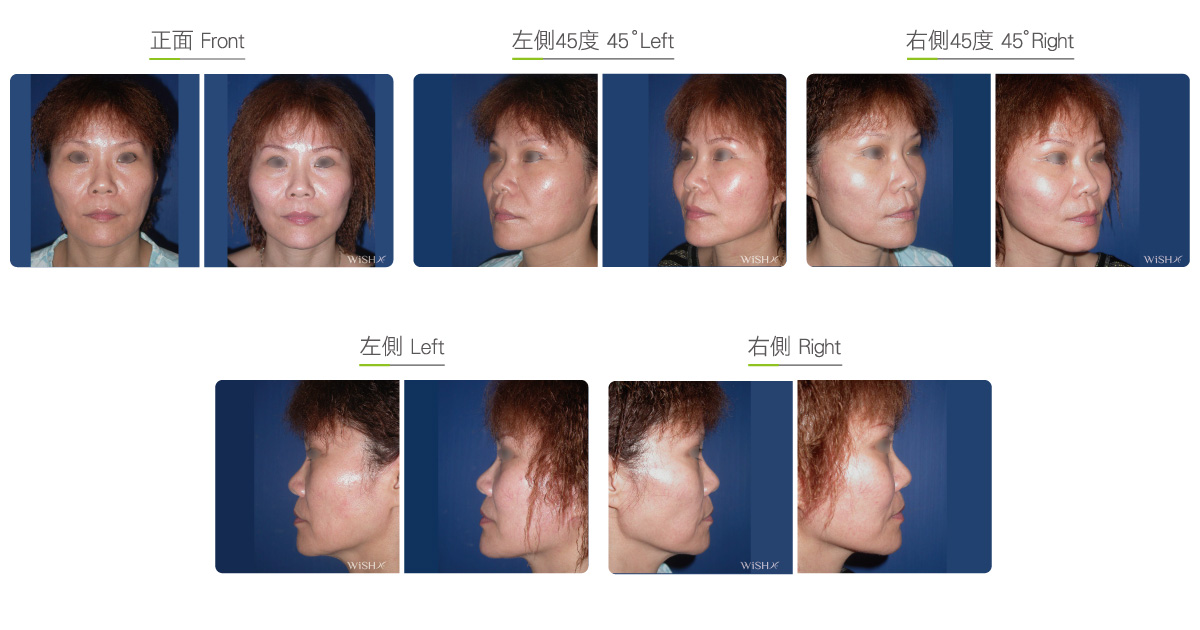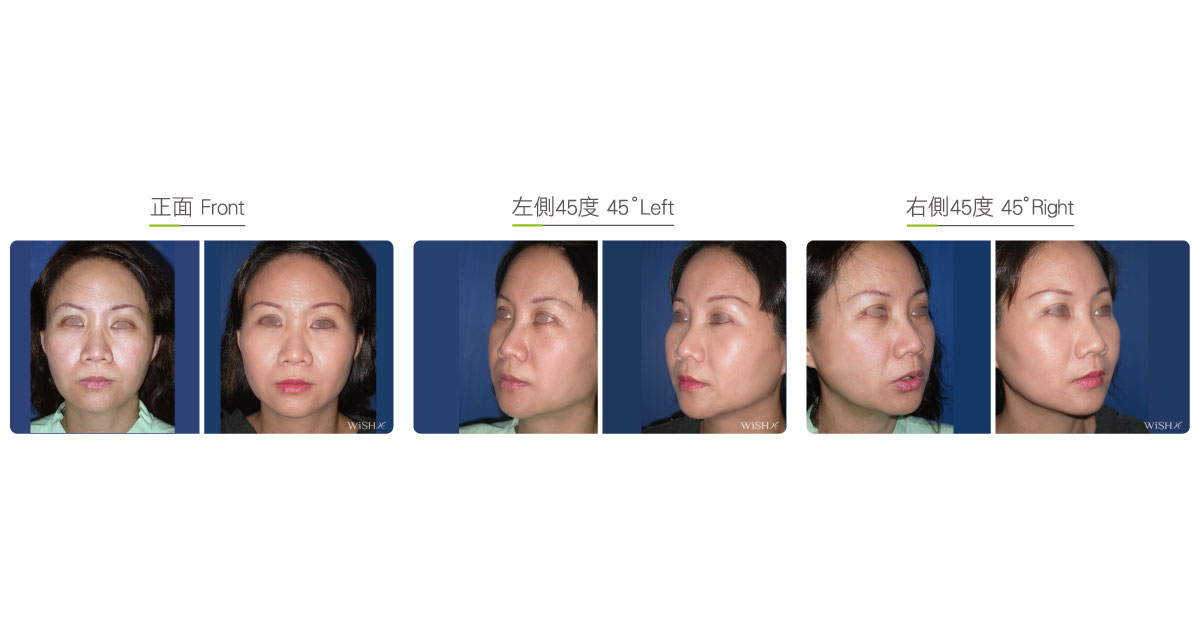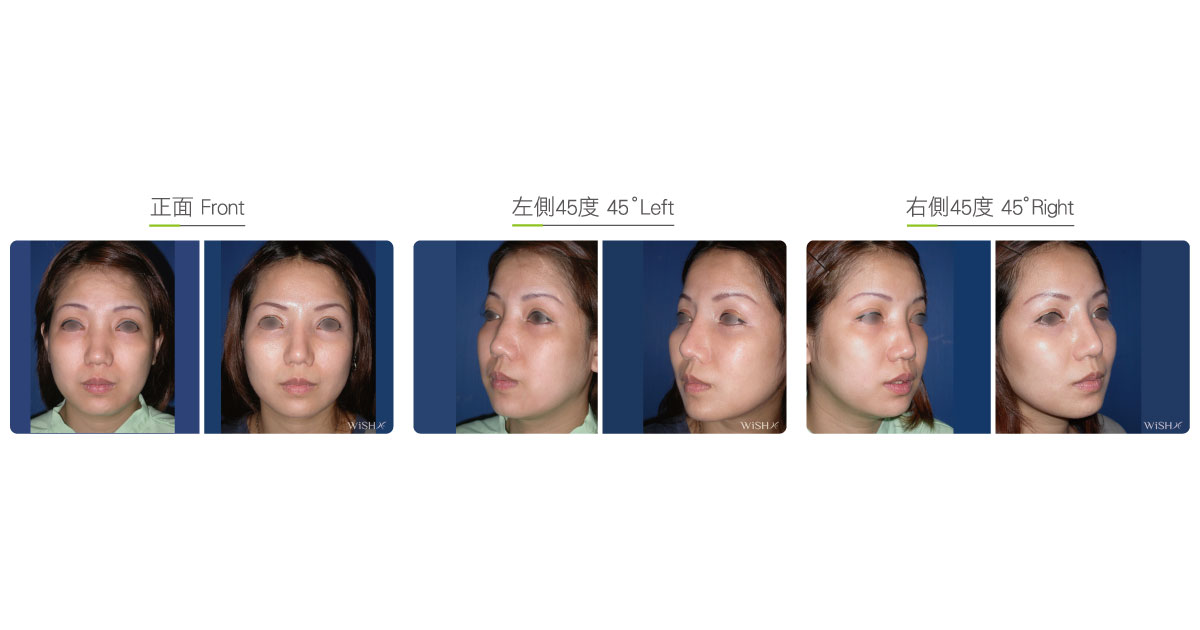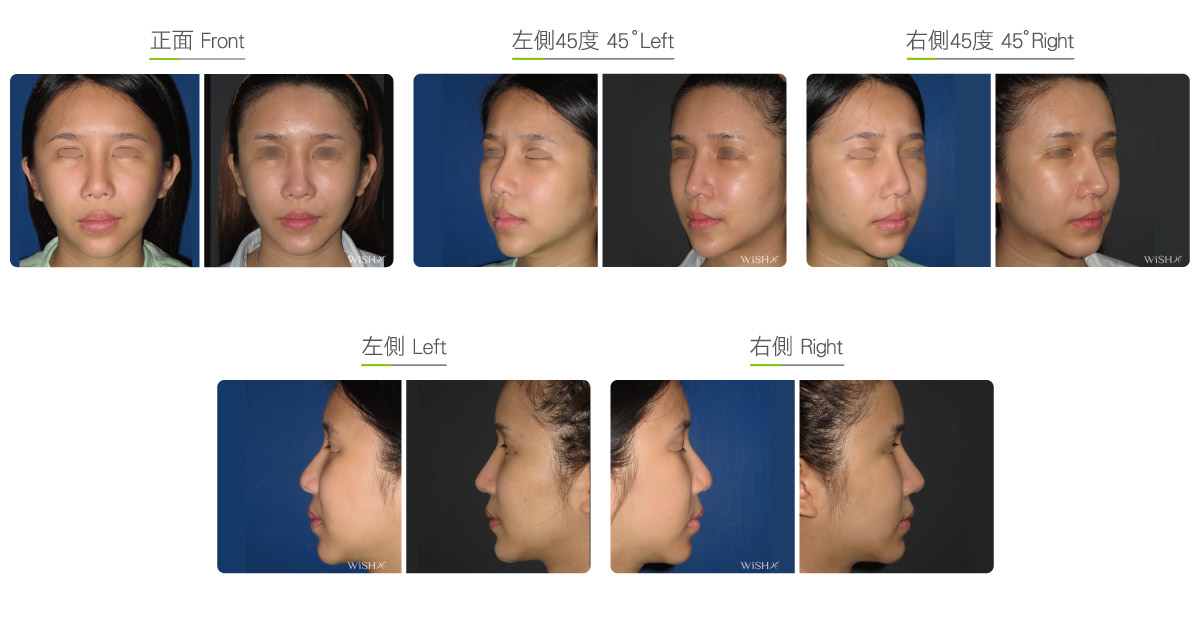Endoscopic Midface Lift
Midface sagging and laxity are common signs of facial aging. They are characterized by cheek fat loss and sinking, deepened submalar triangle, and obvious nasolabial folds at the early stage, which if left untreated, would rapidly progress to heaviness below the cheeks, deep pre-jowl sulcus (Marionette line), loose jawline, or even a square-shaped face and other irreversible signs. Therefore, the appropriate resolution of skin laxity at such a site is also a major concern with regard to restoring a rejuvenated and refreshed appearance. Generally, early midface aging could be redressed by non-surgical methods such as a 3D poly L-lactic acid injection (injectable lift with Sculptra), Ulthera, or Thermage therapy to tighten the skin. However, obvious skin laxity must be addressed by facelifts to achieve drastic and long-lasting effects. Therefore, the minimally invasive endoscopic midface (submalar triangle) lift that leaves no scars on the face has become more popular for numerous women pursuing youth and beauty.
Endoscopic midface lift is similar to forehead lift but only requires one 2cm incision in both frontotemporal sides of the scalp. Dr. Chuang first accesses dissections made by endoscopes and conducts limited forehead subcutaneous separation before opening up the space connecting the superior facial cheekbone. Subsequently, another incision of approximately 1.5 cm is made at the upper gingiva for subperiosteal detachment from the cheekbone skin and connected upward with the channel to the forehead. Next, a long Endotine implant specific for midface lift is inserted through the mouth incision to the scalp via the cheekbone channel. The special design of five pins on this implant is functional to suspend and support the midface sagging skin, which is stretched upward to an appropriate tightness. Then, the end of the Endotine implant is secured at the deep fascia of the scalp.
This surgery aims to lift midface sagging and loosened skin via the tough adhesive force of the Endotine implant and simultaneously raise the submalar triangle to restore the fullness and S-shaped curve of a young face at 45° as well as to partially improve the nasolabial folds or even the fat pads at the corner of the mouth. Compared with autologous fat transfer in the malar cheeks, there is no concern about obesity or plumpness, less likelihood of cheek sagging due to fat weight load, and no unstable results such as autologous absorption. Therefore, the results of this surgery last for 6–8 years or longer on average and are more stable than those of conventional surgeries performed with barbed thread lift. Moreover, endoscopic midface lift allows patients to have a rejuvenated midface in a subtle manner, without a long period of recovery.
Surgical conditions
Duration
- Type of anesthesia: General anesthesia
- Type of incision: An incision of approximately 2 cm posterior to the scalp hairline.An incision of approximately 1.5 cm at the upper gingiva in the mouth.
- Recovery: 7 days
- Removal of sutures: 7–10 days
General instructions
No food and water on the day of surgery
- Rubbing or pressing the incisions on the forehead and scalp should be avoided for 1 month postoperatively.
- Hair dying or perming should be avoided for 2 months postoperatively to prevent unwanted irritation or allergy.
- Very good scalp care should be maintained for 3 months postoperatively to prevent hair loss.
Ideal candidates
- Individuals with deeper nasolabial wrinkles due to mild and moderate midface sagging or laxity.
- Individuals with pre or submalar triangle sagging that makes the tear-through groove or nasolabial folds deeper.
- Individuals with congenital round and chubby face without midface S-shaped curve.
- Individuals with skin laxity caused by prior facial bone reduction surgeries.
Potential complications
- Scalp scars
- Regional hair loss
- Temporary upper lip numbness or tightening
- Temporary cheekbone widening
- Skin reaction to the Endotine implant
Surgical advantages
-
Endoscopic surgery presents minimal invasiveness and rapid recovery.
-
No risk of nerve or blood vessel injury and very safe.
-
Surgical incision hidden in the scalp and mouth, without scars left on the face.
-
Using the Endotine bioabsorbable implant creates a secure fixation that has demonstrated relatively long-lasting and stable results.
-
Surgical results are natural and do not affect facial expression.
Surgical drawbacks
-
Inappropriate for patients with severe midface skin sagging in elderly patients.
-
Those with very thin skins may suffer from hollower cheeks caused by the lift of the Endotine implant.
-
Surgical effects are confined to the midface and submalar triangle but cannot concurrently address lower face or jawline laxity.
-
It may cause temporary cheekbone prominence or widening.
-
The upper lip may suffer from temporary numbness or asymmetry.
-
The results may be relatively poor for patients undergoing several facial surgeries.




